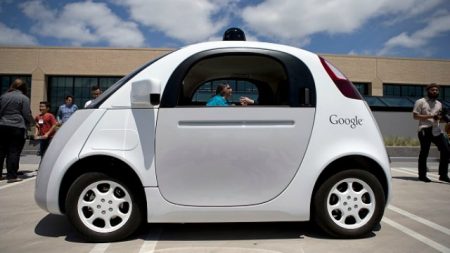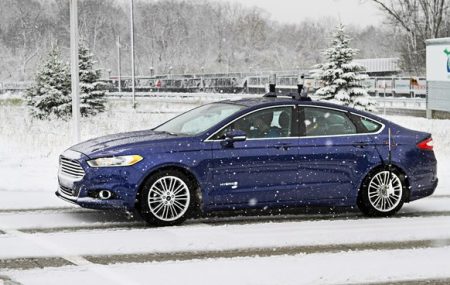October 1, 2016 – Autonomous vehicles are now acceptable on California roadways with the signing of a new state law this week. And unlike any other jurisdiction, California is allowing vehicles with no operator backup or controls required.
Google, Ford, Honda and Tesla are among 15 autonomous vehicle developers planning to put vehicles on public roads. For now though the rollout will be in two pilot project designated areas.
Before the law was enacted driverless vehicles were only allowed on private land or in closed loop sites such as industrial, university or college campuses.
The California law for driverless vehicles restricts speed limits to 56 kilometers per hour (35 mph). There is no requirement for the vehicles to have steering wheels, accelerators or brake pedals.
Despite this new openness the developers of autonomous vehicles, even if given wider access to public roads after these two pilots, will restrict where they operate seeking places with less traffic and fewer distractions.
The U.S. federal government released voluntary guidelines for autonomous vehicles in the last week as well. The goal, to create a framework for states to develop their own rules governing the technology.
With California the first to make the leap it appears we are on an acceleration curve to see autonomous vehicles become common on streets in your neighbourhood much sooner than the mid-2020s.
One analyst upon learning about the new law stated, “having the ability to test more fully autonomous technology is going to help resolve…..debate. It could be that during these tests they find that this technology needs a lot of work.”
One of the challenges that autonomous vehicles had yet to overcome was driving in snowy conditions. Ford recently conducted tests near its Detroit headquarters in cooperation with University of Michigan. They equipped their autonomous vehicles with high-resolution 3D maps. Using 3D the cars not only view the road, its markings and traffic upon it, but also when markings get buried, sees signs, buildings and topography above the road to provide visual reference. The safety systems such as stability and traction control are tied into the vision and autonomous driving software, able to detect deteriorating conditions and make decisions on whether it is safe to proceed. The new ability is called “snowtonomy.”










